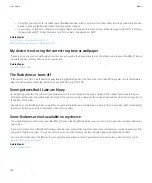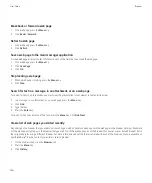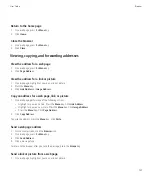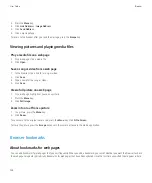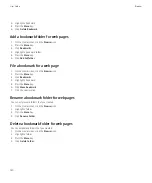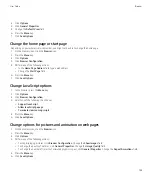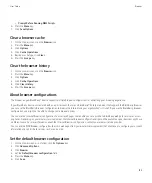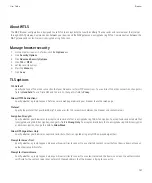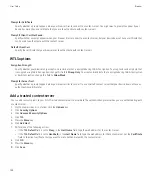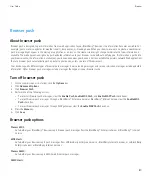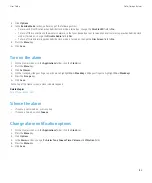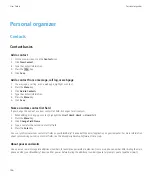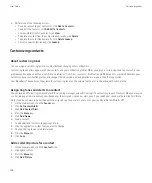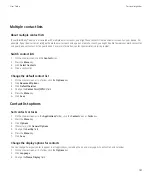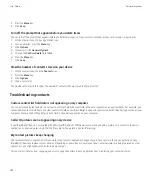
Prompt for Certificate:
Specify whether a prompt appears when your browser tries to connect to a content server. You might want a prompt to appear if your
device has more than one certificate that you use to authenticate with content servers.
Prompt if Client Cert Not Found:
Specify whether a prompt appears when your browser tries to connect to a content server, but your device does not have a certificate that
can be used to authenticate with the content server.
Default Client Cert:
Specify the certificate that your browser uses to authenticate with content servers.
WTLS options
Encryption Strength:
Specify whether your browser only accepts and sends data that is encrypted using 128-bit encryption. To accept and send only data that
is encrypted using 128-bit encryption, change this field to
Strong Only
. To accept and send data that is encrypted using 128-bit encryption
or 56-bit encryption, change this field to
Allow Weak
.
Prompt for Server Trust:
Specify whether a prompt appears when your browser tries to connect to an untrusted content server that your device does not have an
authentication certificate for.
Add a trusted content server
You can add content servers to your list of trusted content servers to accelerate the authentication process when you are authenticating with
a content server.
1.
On the Home screen or in a folder, click the
Options
icon.
2. Click
Security Options
.
3. Click
Advanced Security Options
.
4. Click
TLS
.
5. Press the
Menu
key.
6. Click
Add Host
.
7. Perform one of the following actions:
• If the
TLS Default
field is set to
Proxy
, in the
Host Name
field, type the web address for the content server.
• If the
TLS Default
field is set to
Handheld
, in the
Host Name
field, type the web address for the content server. Set the
Certificate
field to the client certificate that you want to use to authenticate with the content server.
8. Click
OK
.
9. Press the
Menu
key.
10. Click
Save
.
User Guide
Browser
138

